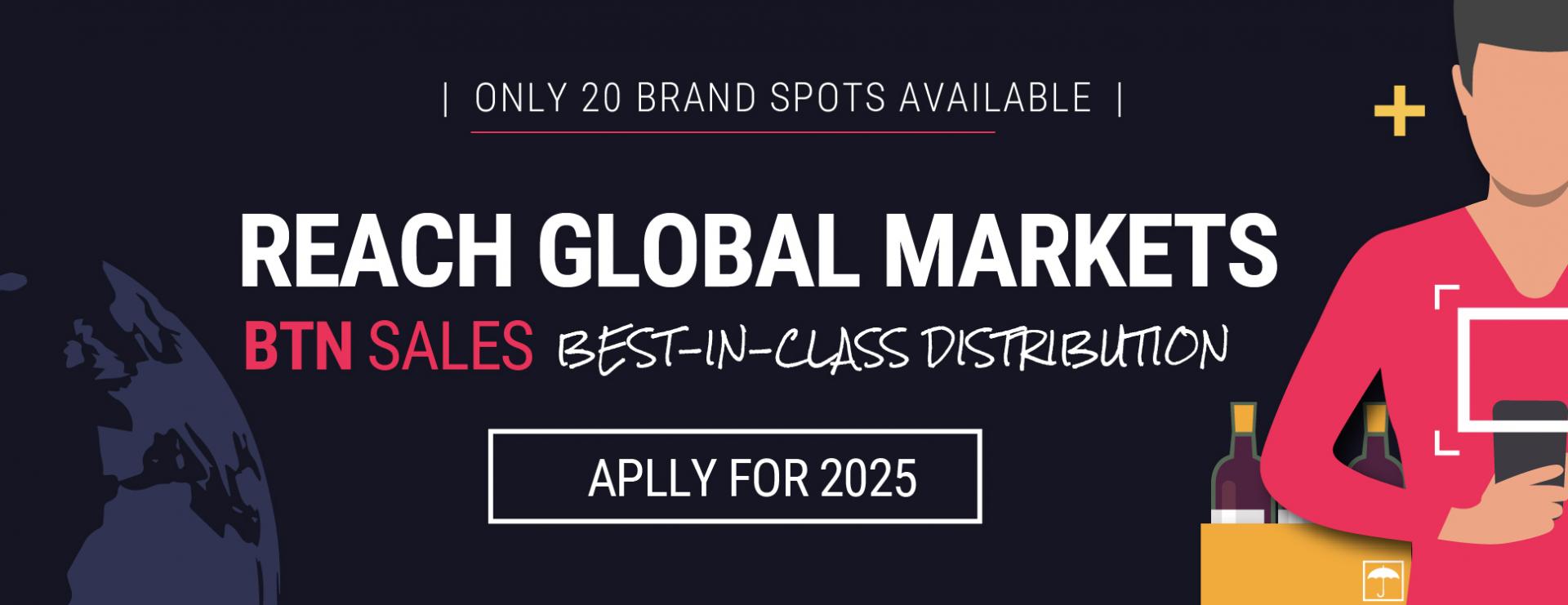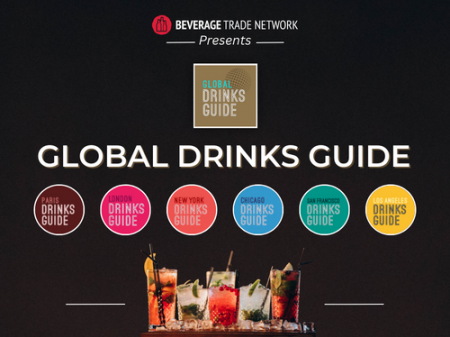Sommeliers Choice Awards 2024 Winners
12 Things To Consider When Finding An Import Partner
How do you find the right importer for your brand and what are the most important things an importer can do to help make your brand a success.

Today, wine and spirits markets across the U.S. have never been more competitive nor has there ever been such a wealth of brand choices for importers to include in their portfolios. How do you find the right importer for your brand? What are the most important things an importer can do to help make your brand successful?
In the movie Moneyball, Brad Pitt’s character (Oakland A’s GM Billy Beane) had a mantra to help his players learn how to win: “It’s a process, it’s a process, it’s a process…” Similar to winning in baseball, finding an importer is not simply opening a web browser, searching on the word “importer,” and contacting people. It’s a process of defining brand messages, budgets, producer commitments, education, sales goals, markets, market events and social media content. Your answers will guide your decision. Logically, selecting an importer is one of the last steps.
1. Your Importer Must Convey a Succinct, Efficient Brand Message
What is your wine or spirit’s identity or “DNA”? You must define this in strong, clear language. Is it a “big brand” California Cab? Is it a volumetric, great value pinot grigio? Is it artisanal, single barrel bourbon made in tiny quantities? You and your importer must know your brand story so well that they can communicate it quickly and easily. For your brand story, a sound byte always works better than an epic novel, especially for social media.
2. Allocate Budget to Create a Brand Presence With Impact
Your importer needs to establish a visible, if not aggressive, presence in your target areas, especially if these are major markets. What is your marketing budget? A good public relations firm can utilize robust relationships with journalists, bloggers and the media to host events that generate buzz about your brand. If your producer’s resources are limited, you’ll have to limit the number of events in major markets and you may want to focus on secondary markets where event costs are lower.
3. Producers Help Personalize Brand Images That Last
Can your importer get a key person from the producer for two or several market visits per year? A winemaker or master blender can personalize and “put a face” on your brand, an important key to success in a given market. Repeat visits to your market will help your importer nurture a sustainable brand image that is impactful.
4. A New Brand, Region or Country Requires Education
Is your wine or spirit from a known brand or region? If so, you’ve got an advantage on other new brands that are unknown. If not, your importer must devote some brand budget to education. It doesn’t matter how good your product is if consumers don’t associate your brand, country or region of origin with quality. This is true especially if consumers don’t know the producer or area at all. Over the past decade, the E.U. has provided significant budget to numerous producers for marketing in the U.S. Similarly, other foreign government agencies may be able to provide support.
5. Keep it Real With Sales Goals and Target Accounts
It is critical that your importer is realistically conservative with sales goals. Have a “reality check” when deciding to pursue hot, trendy restaurants or retailers in a given market. If resources are limited, it’s often better to pursue “B” or “C” restaurants or retailers who may get less attention from large distributors with big budgets. Have your importer choose to fight battles they can win.
6. Major Markets or Secondary Markets?
Your importer’s marketing budget will largely determine your market, activities and scale. Major U.S. markets (New York, Chicago, Los Angeles, Miami, San Francisco) are the most competitive and the most expensive to maintain a brand presence in. Predictably, importers and distributors with the largest marketing budgets are active here. Over the past two decades, the culinary scene has exploded in secondary markets, and high quality wine and spirits have followed. Unlike their major market counterparts, top secondary market restaurants and retailers are not as constantly hounded by sales reps. Many accounts here genuinely appreciate importer visits. Sales in these markets have continued to progressively grow.
7. Coordinated Market Events and Follow Through
To maximize marketing budgets, market events can be coordinated to coincide with yearly portfolio tastings or similar events, and each helps create buzz for the other. As much as possible, importers should schedule winemakers and key producer people for in-store consumer tastings, wine dinners, staff training and promotional campaigns while they’re in the U.S. for the big events. Small, periodic promotions or special pricing can help maintain a market presence for a brand long after the winemaker or distillery manager has returned home.
8. Cost-effective, Creative Marketing Through Social Media
The cost of entry has become much more within reach for small producers and importers to build a web and social media presence. Creativity can make a great marketing concept if an importer doesn’t have a huge budget. For example, over the past few years, a renowned national importer has hosted a consistently successful event wherein local restaurants compete in a contest to make paella, which is paired with a Rioja wine. Showcasing a large Spanish producer, the event has continued to generate loads of mentions in media outlets at minimal cost, and it has gained increased exposure from the importer’s social media platforms that promote it.
9. Original, Different Content on Social Media
It’s important that importers offer original content on each form of social media, or different content on Instagram than Facebook, to give trade and consumer web visitors a compelling reason to visit and stay updated.
10. Importers Span a Range of Size, Reach and Character
Big, national importers have the most brand recognition within the wine and spirits trade and often represent their brands exclusively across all regions and markets within the U.S. Typically, their portfolios have scores of producers which are sold to big distributors across the country, whom in turn may sell hundreds of brands. These importers often have a traditional or “big, corporate” character. Big importer portfolios are the most difficult for new brands to enter. This is not made easier by the fact that many big importers own brands outright; alternatively, numerous brands have significant ownership stake in big importers. Sometimes mid-sized importers are sole U.S. representatives for their brands and sometimes they represent a brand only in one region or market. In addition to big distributors, these importers often have divisions that sell directly to on- and off-premise accounts, so they know their end customers well. Perhaps the most interesting set of importers, there’s a variety of “DNA” to these companies, from staid, traditional, “old school,” to young, hip and urban. This size has the most flexibility, selling to big national distributors and to medium-sized, family-owned, regional distributors. Small importers typically offer a dozen brands or less. Aside from different regional distributors across the U.S., these importers also distribute their brands themselves to customers within their own markets.
11. Mid-sized and Small Importers Can Tell Distinct Brand Stories Better
Big importers often have scores of brands with prefabricated identities that are, in turn, sold to distributors who have hundreds of brands in their huge portfolios. It’s easy to get lost in these big books. Mid-sized and small importers can learn and communicate a brand story from a producer that is not a multi-national conglomerate but a small, artisanal family property with a history that extends back several generations. Mid-sized and small importers are much more likely to know their end customers well. A personal touch is key to telling compelling brand stories that help sell.
12. Match Brand Identity To Importer
Your traditional, family-owned domaine is likely to be successful if your importer has a similar “old school” image and approach. It’s easier to reach a comfort level between cultures (brand and importer) that are more alike than disparate. An edgy, new, cutting-edge brand is a better fit for an importer that is youthful, hip and urban. The message is simple: let brand and importer be themselves and it’s very likely that a good, comfortable working relationship will bring sales along with it
Picture: Raj sabharwal who was awarned whiskey importer of the year by Whiskey Magazine 3 years in a row.














